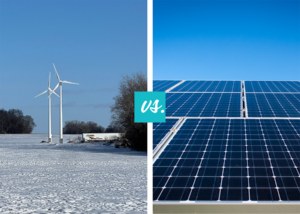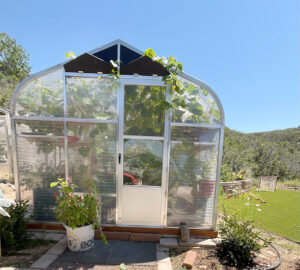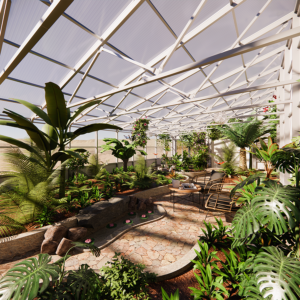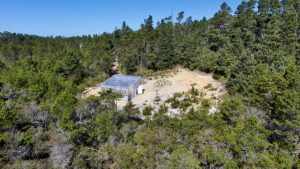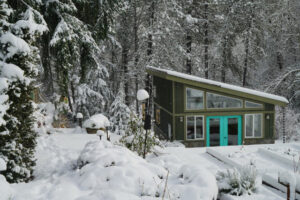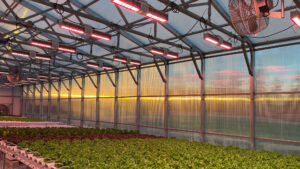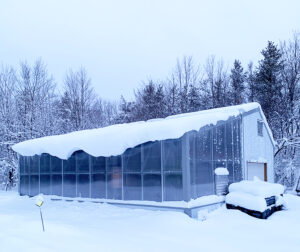A Ceres GAHT® (ground to air heat transfer) System is our patented geothermal climate control technology that has helped our growers maintain comfortable growing conditions, year-round, at a fraction of the cost of a traditional HVAC system.
For in-depth information on how a GAHT® system works, visit our GAHT® page or watch this video.
The GAHT® system was designed to be built with and integrate underneath a Ceres passive solar greenhouse, but it’s possible to add a GAHT® system to an existing non-Ceres or Ceres greenhouse. To do so you would need to install the GAHT® pipes in the ground outside of the greenhouse footprint. Trying to install a GAHT® system underneath an existing structure is generally not cost effective nor easily accomplished. Depending on what you are using the GAHT® for (heating or cooling), installing the GAHT® on the outside of your greenhouse, rather than underneath, may be more beneficial for new greenhouse construction.
In this blog, we will cover GAHT® installation and what makes the most sense for your climate and growing situation.
How does the GAHT® work?
A GAHT® system works by circulating greenhouse air underground through a series of perforated tubes. The air flowing through the tubes is either heated or cooled by the thermal mass of the soil before it’s exhausted back into the greenhouse. Depending on where you live (cold or hot climate), the GAHT® system will be primarily used for heating or cooling.

The GAHT® & Heating:
If your primary focus is keeping the greenhouse warm, it is ideal to have the GAHT® system under the greenhouse because the structure will help insulate the soil underneath. Wherever you install your GAHT®, It is important to insulate the sides of the system to retain as much heat as possible in the soil surrounding the pipes. We recommend insulating the outside of the greenhouse foundation if building the GAHT® system underneath.
If you build an exterior GAHT®, be sure to insulate the top of the system as well as the sides. A good location for an exterior GAHT®, is a place with lots of sunshine, like the south or west side of the greenhouse.
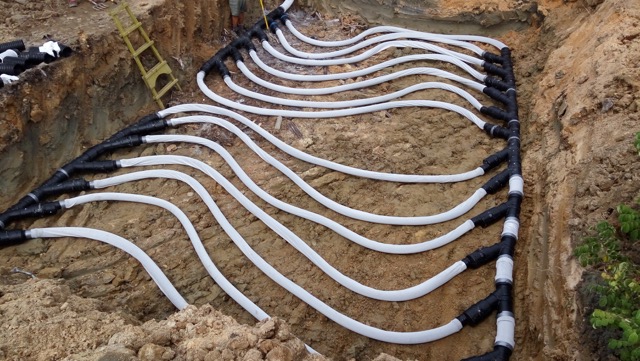
The GAHT® & Cooling:
If your primary focus is keeping the greenhouse cool, it is ideal to have the GAHT® on the outside of the greenhouse and deeper in the ground where the soil is cooler during the summer. In this case, no insulation is needed as you want to allow the heat to transfer away from the GAHT®. You also want to install the system in a shaded area on the north or east side of the greenhouse. If you are going to install the GAHT® system underneath the greenhouse, either because you’re limited on space or some other reason, the same recommendations about insulation and depth apply: no insulation and the deeper the better. Installing the system deeper in the earth requires additional safety precautions to be taken to address the risk of soil collapse and personnel engulfment.
What’s important to note is that a GAHT® is really only suitable for cooling a greenhouse in late Fall, Winter and early Spring. In the Summer, the sun’s energy is so powerful that the GAHT® would need to be very, very large (making it very expensive) to cool the greenhouse entirely on its own. If you are able to cool the greenhouse with an evaporative cooler, this is almost always a less expensive, and higher performance option for cooling in the summer.
A benefit to cooling your greenhouse with a GAHT® during the late Fall, Winter and early Spring is that it allows you to keep your greenhouse sealed. This prevents shocking the plants with cold air from ventilation and allows CO2 supplementation to increase plant growth during these periods.

Sizing your GAHT® System
One general rule for installing an external GAHT®, whether you’ll mostly use it for heating or cooling, is that the excavation footprint of the GAHT® system should be similar to the footprint of the greenhouse. For example, a 12×24 greenhouse requires an approximate area of 12×24 for the GAHT®. This footprint correlation will ensure that there is a sufficient rate of soil to air heat exchange. For cooling applications, performance can be increased by increasing the size of the footprint.
We hope that this blog was helpful in figuring out whether you should install your GAHT® externally, underneath your greenhouse, or not at all. If you’d like to compare the GAHT® to our other geothermal systems, The EcoLoop™ or EcoPack™, check out our HVACD options in the Technologies header.
If you have any questions or would like to speak to a greenhouse expert, fill out a contact form here!


